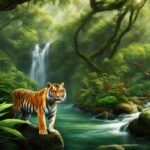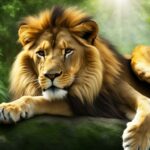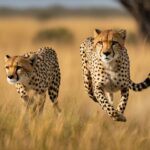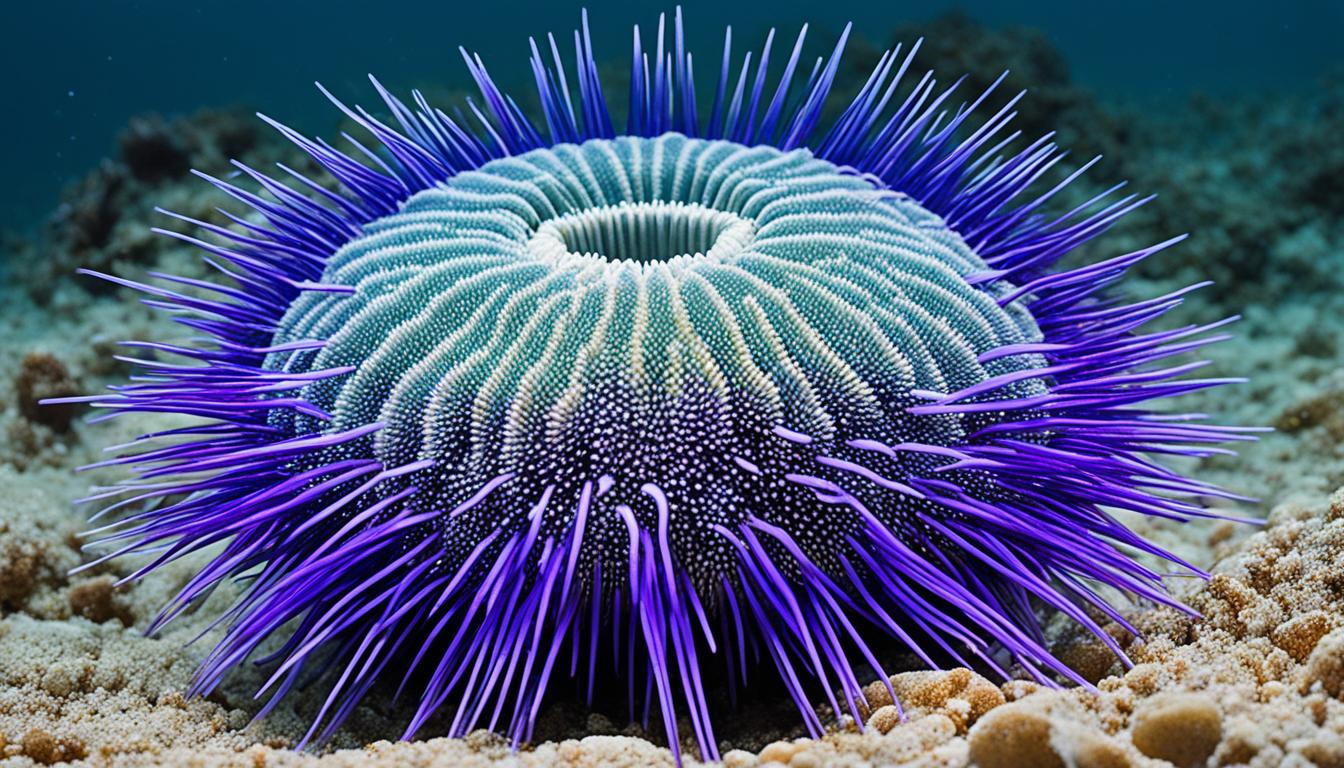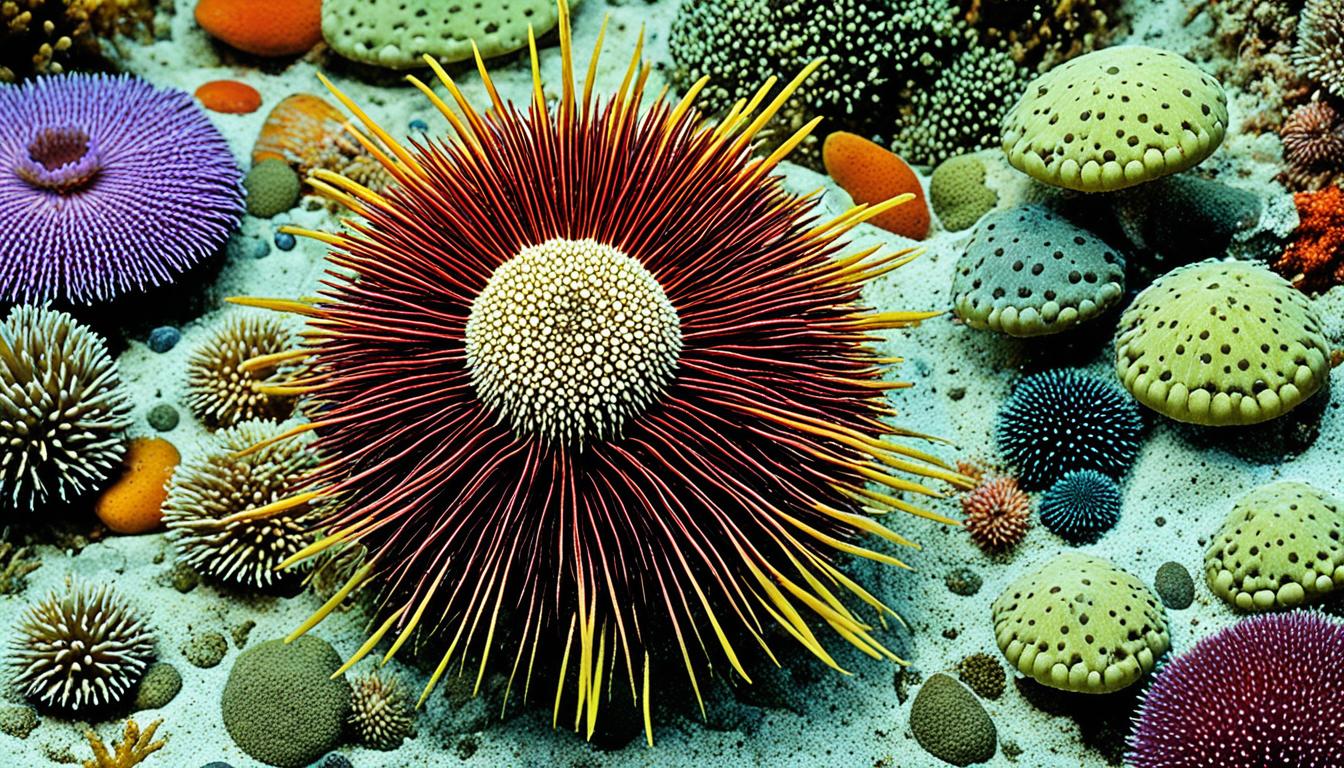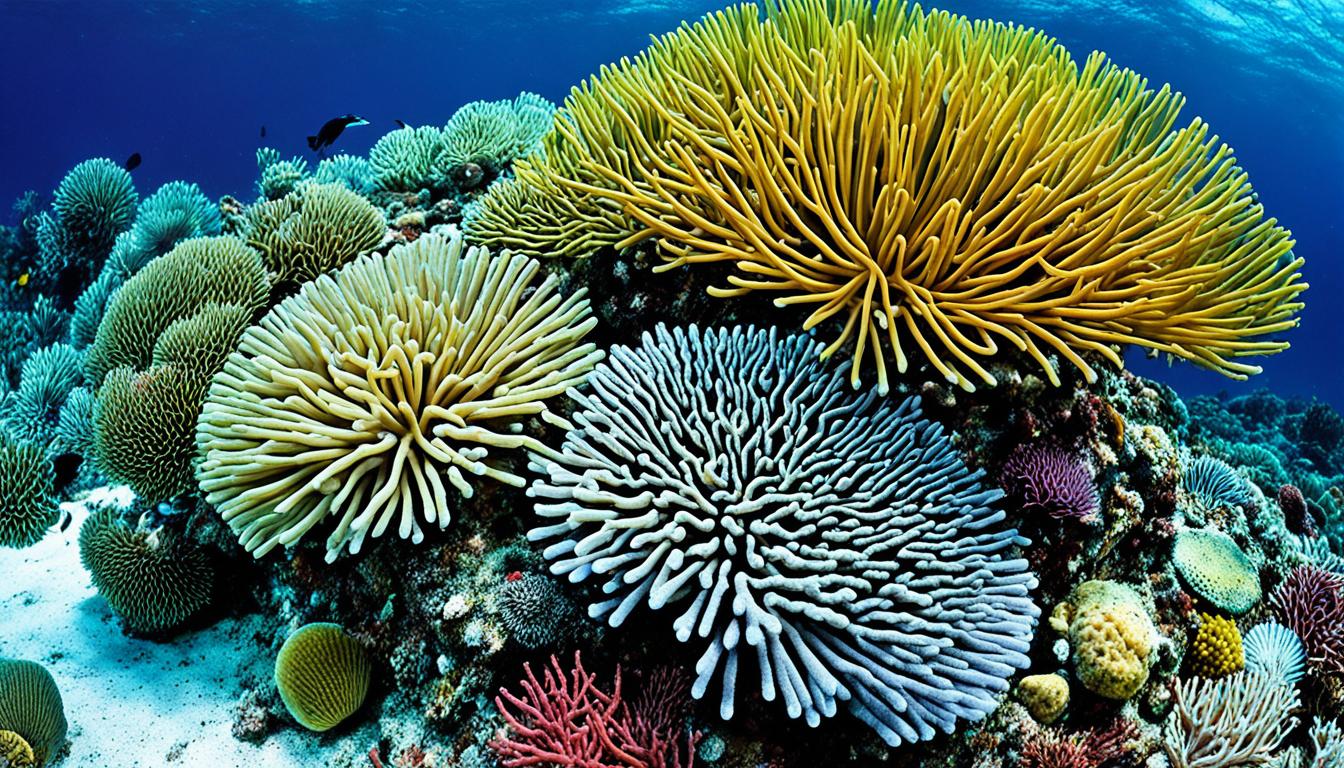Lions have a fascinating history and have played significant roles in wildlife conservation. From powerful leaders to iconic figures, these famous individual lions have captured the imagination of people around the world.
Key Takeaways:
- Lions have a rich history in wildlife conservation.
- Several individual lions have gained fame for their unique characteristics.
- These famous lions have become iconic figures in the world of wildlife conservation.
- Their stories inspire awe and admiration.
- They remind us of the incredible power and significance of these majestic creatures in our natural world.
Scarface ‘The Four Musketeers’
Scarface, also known as ‘The Four Musketeers’, was a male lion who gained fame for his dominance and strength. He and his three brothers successfully won over the Marsh Pride in Kenya and ruled their territory for many years. Scarface’s courage and tenacity made him a tourist attraction and a symbol of lion dynasty.
The Rise of Scarface
Scarface and his brothers were born into a world of fierce competition and survival. From a young age, they faced numerous challenges, battling rival lions and proving themselves as capable leaders. With their striking manes and powerful presence, they quickly established their dominance in the Marsh Pride.
As the ‘The Four Musketeers’, Scarface and his brothers successfully defended their territory against intruders and protected their pride. Their impressive manes and fearless nature made them the kings of the savannah and a sight to behold for tourists visiting the Masai Mara National Reserve.
“Scarface was truly a force to be reckoned with. His majestic presence and unwavering determination inspired awe in all who witnessed him. He embodied the spirit of a true lion king.” – Wildlife photographer and eyewitness, Sarah Thompson.
| Lion Name | Age | Personality |
|---|---|---|
| Scarface | 9 years | Dominant, fearless, resilient |
| Athos | 8 years | Aggressive, protective, loyal |
| Porthos | 8 years | Playful, outgoing, charismatic |
| Aramis | 7 years | Clever, strategic, agile |
However, Scarface’s reign eventually came to an end when he encountered a formidable challenger from a rival pride. Despite his age and battle scars, Scarface fought valiantly but was overpowered by his opponent. His legacy lives on, as his courageous spirit continues to inspire wildlife enthusiasts and conservationists around the world.
Famous Individual Lions: The Lions of Sabi Sands
The Lions of Sabi Sands, known as the Mapogo coalition, have a notorious reputation in the world of lions. This group of six male lions dominated the Sabi Sands game reserve in South Africa, leaving a lasting impact on the ecosystem and the lion population. Their reign of terror marked a dark chapter in the wildlife conservation history.
Throughout their time in Sabi Sands, the Mapogo coalition displayed brutal and aggressive behavior. They killed over 100 lions, including cubs, in their quest for dominance and territorial control. Their sheer power and strength made them a force to be reckoned with, and their presence struck fear into the hearts of other animals in the reserve.
However, their power eventually waned when the Majingilanes coalition challenged and overthrew them. The Mapogo coalition’s brutal reign came to an end, but the scars they left behind are still visible. The Sabi Sands reserve continues to recover from the impact of their ruthless rule, and the lion population slowly rebuilds.
| Lions of Sabi Sands: Mapogo Coalition | Impact |
|---|---|
| Number of Male Lions | 6 |
| Lions Killed | Over 100, including cubs |
| Duration of Reign | Several years |
| Repercussions | Significant impact on the ecosystem and lion population |
The Lions of Sabi Sands have left a lasting legacy, reminding us of the complex dynamics of wildlife conservation. While their actions were brutal, they serve as a stark reminder of the challenges faced in preserving and protecting these majestic creatures.
Rubens “Daniel in the Lions Den”
The painting “Daniel in the Lions Den” by Rubens is a masterpiece that portrays the biblical story of Daniel’s miraculous escape from the den of lions. With its exquisite details and vibrant colors, this painting has become an iconic representation of faith and divine protection.
In the painting, Rubens captures the intense drama of the scene as Daniel kneels in the center of the den, surrounded by a group of powerful and majestic lions. The artist skillfully conveys the ferocity of the lions through their muscular bodies, fierce expressions, and dynamic poses. Yet, despite their strength, the lions seem to be at peace in the presence of Daniel, emphasizing the miraculous nature of his survival.
Throughout the painting, Rubens uses light and shadow to create a sense of depth and drama. The soft glow that illuminates Daniel’s figure symbolizes the divine light that guides and protects him. The lush foliage in the background adds a touch of realism to the scene while also emphasizing the contrast between the serenity of Daniel and the untamed wilderness of the lions.
“Daniel in the Lions Den” is a powerful testament to the enduring human spirit and the unwavering faith in the face of adversity. It serves as a reminder that even in the most challenging circumstances, faith can triumph over fear.”
Overall, Rubens’ “Daniel in the Lions Den” is a stunning portrayal of a timeless biblical story. Its rich symbolism, masterful composition, and attention to detail make it a masterpiece that continues to captivate audiences today.
| Key Details | Value |
|---|---|
| Artist | Peter Paul Rubens |
| Year | 1615 |
| Medium | Oil on canvas |
| Dimensions | Height: 243 cm (95.7 in); Width: 325 cm (128 in) |
| Location | Prado Museum, Madrid, Spain |
The man-eating lions of Tsavo
The man-eating lions of Tsavo are infamous for their deadly attacks on humans during the construction of the Ugandan/Kenyan Railway in 1898. These maneless male lions deviated from their typical prey preferences and targeted human workers instead. Led by Lieutenant-Colonel John Henry Patterson, efforts were made to hunt and kill these notorious lions, which ultimately resulted in their demise.
The story of the man-eating lions of Tsavo has captured the imagination of people around the world, and their legend lives on. Today, their preserved remains are on display at the Field Museum in Chicago, serving as a powerful reminder of the challenges faced by early settlers and the bravery required to overcome them.
“These man-eating lions were a formidable threat to those involved in the construction of the railway. Their ability to strike fear into the hearts of men and disrupt progress made them legendary figures in the annals of wildlife history.” – Lieutenant-Colonel John Henry Patterson
While the man-eating lions of Tsavo were undoubtedly a terrifying presence, it is important to note that their behavior was an anomaly. Lions are typically not known to target humans as prey, and incidents like these are extremely rare. Today, efforts are underway to promote coexistence between humans and lions, ensuring the preservation of these majestic creatures and the safety of local communities.
| Fact | Detail |
|---|---|
| Location | Tsavo, Kenya |
| Lions Involved | Maneless male lions |
| Number of Victims | Approximately 35 workers |
| Timeframe | 1898-1899 |
| Resolution | Lieutenant-Colonel John Henry Patterson led the hunt and killed the man-eating lions |
George Adamson: The Father of Lions
George Adamson, a British wildlife conservationist, is widely known as the “Father of Lions.” His exceptional work and unwavering commitment to the well-being of captive lions have made him a renowned figure in the field of wildlife conservation. George dedicated his life to raising and rehabilitating these magnificent creatures, with the ultimate goal of reintegrating them into the wild where they belong.
As an advocate for lions, George understood the importance of preserving their natural habitats and protecting them from threats such as poaching and habitat loss. He believed in the power of education and awareness to inspire change and conservation efforts. His tireless efforts to raise awareness about the plight of lions and their vital role in maintaining balanced ecosystems have left a lasting impact on the world.
George Adamson once said, “Lions are not just symbols of strength and power, but also ambassadors for the wilderness. By protecting them, we are ultimately protecting the entire ecosystem.”
Through his pioneering work, George Adamson not only saved the lives of numerous lions but also helped to establish a greater understanding and appreciation for these majestic creatures. His dedication and love for lions serve as an inspiration to conservationists and animal lovers worldwide, reminding us of the urgent need to protect and preserve our wildlife for future generations.
| Lion Conservation Achievements | Impact |
|---|---|
| Raised and rehabilitated over 30 lions | Provided rescued lions with a chance to live as wild animals |
| Established the Adamson’s Wildlife Trust | Continues to support and advance lion conservation initiatives |
| Advocated for the establishment of wildlife reserves and increased protection for lions | Contributed to the preservation of lion populations and their natural habitats |
Hjalmar the Dreadful
Hjalmar the Dreadful is a legendary lion who was born in the Ngorongoro Crater, Tanzania. This majestic creature became widely known for his unique appearance, sporting muddy and wild dreads. Hjalmar’s distinct mane made him stand out among other lions, capturing the attention and curiosity of wildlife enthusiasts and researchers alike.
What set Hjalmar apart was not just his appearance but also his adventurous spirit. He ventured beyond his territory and was discovered miles away, showcasing the exceptional navigational abilities of lions. This remarkable feat demonstrates their resilience and adaptability in diverse environments.
While Hjalmar’s story has captivated many, it also serves as a reminder of the incredible power and beauty of these magnificent creatures. Lions, like Hjalmar, play a vital role in maintaining the balance of ecosystems, and their conservation is crucial to the preservation of our natural world.
“Hjalmar’s muddy dreads and courageous exploration exemplify the awe-inspiring nature of lions. Their ability to navigate vast landscapes and adapt to different surroundings is a testament to their strength and resilience.” – Wildlife researcher
In conclusion, Hjalmar the Dreadful’s story showcases the remarkable characteristics of lions and their significance in the animal kingdom. From their unique appearances to their extraordinary abilities, these majestic creatures continue to captivate our attention and remind us of the importance of protecting and conserving their habitats.
Conclusion
Lions have captivated humans throughout history, and their famous individuals have left a lasting legacy in wildlife conservation. From the powerful and dominant Scarface ‘The Four Musketeers’ to the inspiring and dedicated George Adamson, these renowned lion leaders and well-known lion figures remind us of the incredible power and significance of these majestic creatures in our natural world.
Each of these lions has made a unique impact on their environment, whether through their leadership, resilience, or representation in art. Their stories inspire awe and admiration, showcasing the beauty and complexity of lion behavior and their role in maintaining the delicate balance of nature.
As we continue to work towards preserving wildlife and their habitats, these famous individual lions serve as symbols of the importance of conservation efforts. Their stories remind us of the need to protect and preserve these magnificent creatures for future generations to admire and cherish.
Do Famous Individual Lions Play a Role in Tiger Conservation?
Famous individual lions do not directly play a role in tiger conservation as they are natural predators of tigers. Tigers face threats from habitat loss, illegal wildlife trade, and poaching. Conservation efforts focus on preserving tiger habitats, combating illegal activities, and promoting awareness to protect these majestic creatures. Lions and tigers may be known for their strength, but their interaction in the wild is defined by competition rather than collaboration.
FAQ
Are there famous individual lions in the history of wildlife conservation?
Yes, there are several famous individual lions who have played significant roles in wildlife conservation.
Who is Scarface ‘The Four Musketeers’?
Scarface, also known as ‘The Four Musketeers’, was a male lion who gained fame for his dominance and strength.
What is the Lions of Sabi Sands?
The Lions of Sabi Sands refer to the Mapogo coalition, consisting of six male lions, who became the most notorious and brutal coalition in lion history.
What is Rubens “Daniel in the Lions Den” painting about?
Rubens “Daniel in the Lions Den” is a famous depiction of the biblical story where Daniel is seen praying among a pack of lions in the lion’s den.
Who were the man-eating lions of Tsavo?
The man-eating lions of Tsavo were maneless male lions who gained notoriety for killing many men during the construction of the Ugandan/Kenyan Railway in 1898.
Who is George Adamson and why is he known as the “Father of Lions”?
George Adamson was a British wildlife conservationist who dedicated his life to raising captive lions and reintegrating them into the wild. He is known as the “Father of Lions” for his groundbreaking work in lion conservation.
Who is Hjalmar the Dreadful?
Hjalmar the Dreadful was a lion born in the Ngorongoro Crater in Tanzania. He became known for his unique appearance with muddy and wild dreads.
What is the significance of these famous individual lions in wildlife conservation?
These famous individual lions have left a lasting legacy in wildlife conservation and remind us of the incredible power and significance of lions in our natural world.



